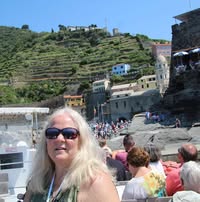2d • Destinations
Today we went to Chonomara National Park
Basic Facts
- Connemara National Park covers about 2,000 hectares of mountains, bogs, grassland, heath, and woodland.
- It was officially opened to the public in 1980.
- The park lies in northwest Connemara, with its entrance near Letterfrack, along the N59 road.
- The mountain range of the Twelve Bens (Beanna Beola) runs through / adjacent to the park.
- Benbaun is the highest peak in the range (approx. 725 m) and within the environs.
What to Do / Trails & Highlights
If I were you planning a strong day or two (or advising someone traveling through), here are the key draws:
Walking / Hiking Trails
There are several formal trails in the park; beyond them you’ll need map & compass skills.
- Diamond Hill Loop — the signature trail. It gives panoramic views over the Twelve Bens, lakes, and out toward the Atlantic. It splits into Lower Diamond Hill (shorter, easier) and Upper Diamond Hill (longer, steeper).
- Sruffaunboy Trail
- Ellis Wood Nature Trail
- Upper / Lower Diamond Hill versions
(The above trails are well-signed; more adventurous routes into the bogs / mountains require navigational skill.)
Flora & Fauna / Nature
- Vegetation is dominated by blanket bog, heathland, grassland, with a variety of peatland species.
- Interesting plants include insectivorous species (e.g. sundew, butterwort) in the nutrient-poor bog soils.
- Birds: skylarks, meadow pipits, European stonechat, robins, wrens, and birds of prey like peregrine falcon, merlin.
- Mammals are harder to see: foxes, pine martens, bats, stoats, and – iconic – the Connemara pony (grazing in valleys).
Cultural / Historical Interest
- Much of the land once belonged to the Kylemore Abbey estate.
- There are archaeological remnants: megalithic tombs, old farm enclosures, even vestiges of human settlement.
- The visitor centre, located in Letterfrack, is housed in former farm / industrial school buildings, with exhibitions about the landscape, wildlife, and the region’s heritage.
Tips / Advice (As a Travel Mentor — you know I can’t resist)
- Time & Planning: Even doing just the Diamond Hill loop will take a few hours (especially if you stop for photos). Build in buffer time for weather and rest.
- Season & Weather: The west coast is subject to Atlantic weather — bring layers, waterproofs, sturdy boots.
- Start Early / Off-Peak: To beat the crowds and get better light for photography, mornings or late afternoons are ideal.
- Photography Angles: The summit of Diamond Hill offers sweeping vistas. Also look for reflections in the lakes, the contrasts of bog and rock, moody skies.
- Access / Logistics: You’ll likely approach via Galway → N59 toward Clifden, with a turn toward Letterfrack. The Visitor Centre is your hub for info, maps, etc.
- Combine Nearby Sights: Pair the park with a visit to Kylemore Abbey, the Wild Atlantic Way coastline, Clifden, Sky Road, or even boat trips to islands like Inishbofin.
- For Clients / Travelers: If your audience includes less‐fit folks, use the Lower Diamond Hill or shorter nature trails. For more adventurous hikers, plan backcountry loops beyond the formal paths (with navigation).
- Messaging & Social Content: Use the contrasts — wild bog, sharp peaks, soft light, isolation vs accessible paths. “Escape the ordinary into the raw wildness of Connacht” kind of lines.
We walked on the lower loop & had really great weather. We couldn’t asked for a more beautiful day 😎
0:38
0:29
1
4 comments

skool.com/travel-trainers
Do you book your own travel?✈️
Have you ever gotten paid for it?
Let us show you how you can turn your Passion into your Paycheck. 💰
Powered by




